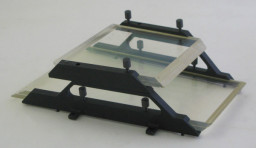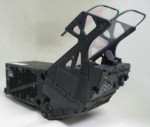The Total field of view (TFoV) of a Head Up Display is defined as the “Total angle subtended by the display symbology seen with head movement” and it is largely determined by the size of the exit lens in a conventional refractive optical design.
The Instantaneous Field of View (IFoV) is the “Subtended angle of display seen from one head position using one eye” and the Binocular Instantaneous Field of View is the “Subtended angle of display seen from one head position using both eyes”. Typically a HUD TFoV will be circular and of 25° and may only have an IFoV of 13.5° in elevation and 20° in azimuth. The pilot has two eyes so the actual IFoV is two overlapping circles a bit like a Venn diagram. The exit lens is limited in size by what can be made accurately but also by the environment. The stress of operation over a very wide temperature range (-40°C to +125°C or more in an enclosed cockpit in the desert sun) and extreme temperature shock should the canopy be lost at altitude together with severe vibration especially when the aircraft gun is firing have held this lens to no more than about 6.7inches in diameter.
The vertical field of view can be extended by the addition of a second Combiner Glass forward of the first glass and extending higher up. The optical system then provides an IFoV with a second but smaller double circular field above the first. Now, the image has to transition from the aft glass to the forward glass in a smooth manner and this done by using graded optical coatings which are traditionally a neutral density coating. Thus the coating on the aft glass reduces in reflectance at the top as the forward glass coating increases in reflectance and the transmittance, of course, does the opposite. The whole effect must be achieved without any obvious display artefacts and even more important there must be no false horizon lines created. This last issue is aided by making the top of the Combiner Glass angle down in the forward direction on the sight line from the design eye position. To achieve this gradation of coatings requires a sophisticated deposition technique. The Company used this optical design on the F-5 HUD and increased the vertical FoV by about 3°. Originally the graded coatings were made by Watshams who were experts in coating optical elements.





